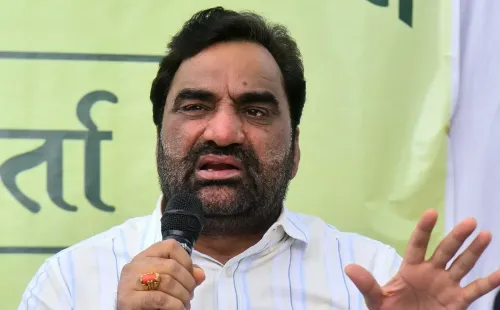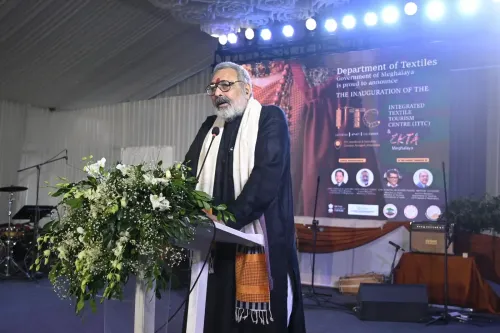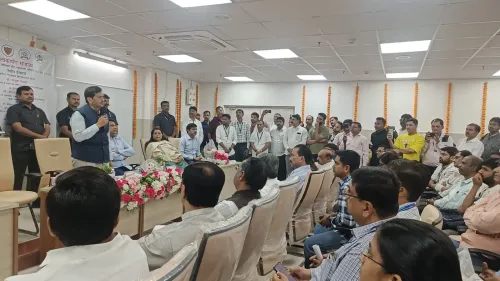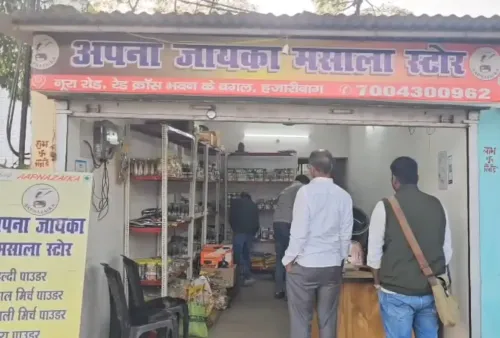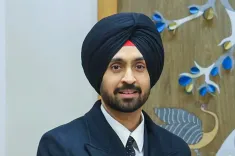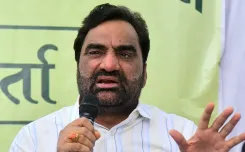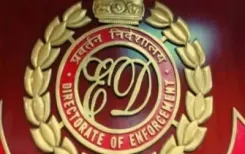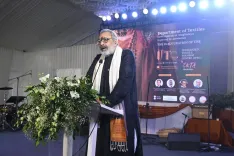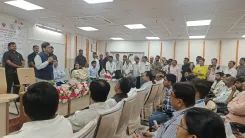What Did PM Modi Discuss with J&K L-G and CM Regarding Kishtwar Tragedy?
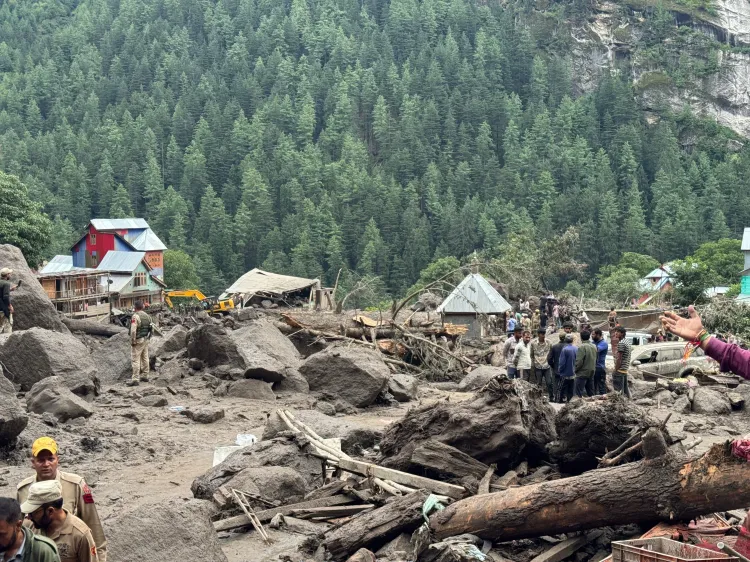
Synopsis
Key Takeaways
- PM Modi has pledged full support for Kishtwar victims.
- Rescue operations involve multiple agencies.
- Health infrastructure has been strengthened in the region.
- Communication between state and national leaders is crucial.
- Community efforts are vital for recovery.
Srinagar, Aug 15 (NationPress) Prime Minister Narendra Modi engaged in a discussion on Friday with Jammu and Kashmir Lt. Governor Manoj Sinha and Chief Minister Omar Abdullah concerning the devastating aftermath of the cloudburst that struck Kishtwar. He evaluated the crisis and pledged all essential support.
"I conversed with Jammu and Kashmir LG, Shri Manoj Sinha Ji, and CM Shri Omar Abdullah Ji regarding the current circumstances following the cloudburst and subsequent flooding in Kishtwar. Local authorities are actively working to assist the victims," PM Modi shared on his X handle.
CM Omar Abdullah conveyed to the PM an update on the circumstances in Kishtwar. "I just received a call from Hon PM @narendramodi Sb. I briefed him about the situation in Kishtwar & the measures being taken by the administration. My government & the affected individuals are thankful for his support & the assistance from the Union Government," he posted on X.
Tragically, 45 individuals have lost their lives and 120 sustained injuries due to the catastrophic cloudburst impacting Kishtwar district, as relief and rescue efforts continued unabated on Friday.
The significant cloudburst occurred in the Chashoti region of Kishtwar’s Paddar sub-division on Thursday, claiming at least 45 lives, including two CISF personnel and numerous pilgrims visiting Machail Mata.
Authorities reported that over 120 injured individuals have been rescued, with the condition of 35 classified as critical by medical professionals.
Officials confirmed that several individuals remain unaccounted for, raising concerns that some may be trapped under the debris caused by the cloudburst.
A comprehensive rescue operation was initiated immediately post-cloudburst, involving the State Disaster Response Force (SDRF), police, the Army, and local volunteers, with additional teams from the National Disaster Response Force (NDRF) mobilized to enhance rescue efforts.
Over 300 soldiers have been deployed for rescue operations by the Army.
The Chashoti village serves as the last accessible point on the route to the Machail Mata temple, which was bustling with devotees at the time of the disaster. The pilgrimage commenced on July 25 and was scheduled to conclude on September 5 but has since been suspended due to this tragedy.
The cloudburst resulted in the destruction of numerous homes, six government structures, three temples, cowsheds, and a bridge.
A community kitchen, or langar, established for the pilgrims was severely affected by the cloudburst, which incited flash floods and obliterated several structures, including temporary stalls and a security outpost.
Reports indicate the community kitchen was filled with devotees when the disaster struck.
Pankaj Sharma, the Deputy Commissioner of Kishtwar, announced the suspension of the pilgrimage to the Machail Mata shrine in light of the tragedy as authorities mobilized all available resources for rescue operations in Chashoti.
He stated that teams from the NDRF were dispatched from Udhampur to Kishtwar, while the 118 RCC of BRO also sent personnel and equipment to assist in clearing the damaged Chashoti road and erecting a temporary bridge. Deputy Commissioner and SSP Kishtwar, Naresh Singh, are supervising the rescue operations on-site.
An official indicated that as of late at night, 11 bodies had been identified, and 67 injured individuals were transferred to the District Hospital in Kishtwar, with some critically injured patients being referred to Jammu.
Critical health infrastructure at the Sub-District Hospital (SDH), Paddar, has been bolstered with an additional 13 doctors and 31 paramedics. Senior health department officials are stationed at Paddar to oversee rescue and medical operations. The District Hospital (DH) in Kishtwar has been enhanced with additional General Surgeons, Orthopaedic Surgeons, and Anaesthetists from the Government Medical College (GMC) in Doda.
Moreover, tertiary care facilities have been placed on high alert.
A specialist team is prepared at Doda to manage patients being referred from DH Kishtwar. The Government Medical College (GMC) hospital in Jammu is fully operational with 50 dedicated disaster beds, 20 ventilator beds, and five operating theatres.
Specialist medical teams, including Orthopaedicians, Neurosurgeons, Critical Care Anaesthetists, and Maxillo-facial consultants, are on standby. The GMC Jammu Blood Bank has been augmented with over 200 units of blood for emergencies.
In response to the crisis, PGIMER Chandigarh has sent a specialized team of Critical Care Specialists and Neurosurgeons to GMC Jammu to enhance critical care capabilities.
A fleet of 65 ambulances from the health department, NHPC, Army, CRPF, and the 108 Emergency Service of the J&K Health and Medical Education department was dispatched for rescue and patient evacuation.


